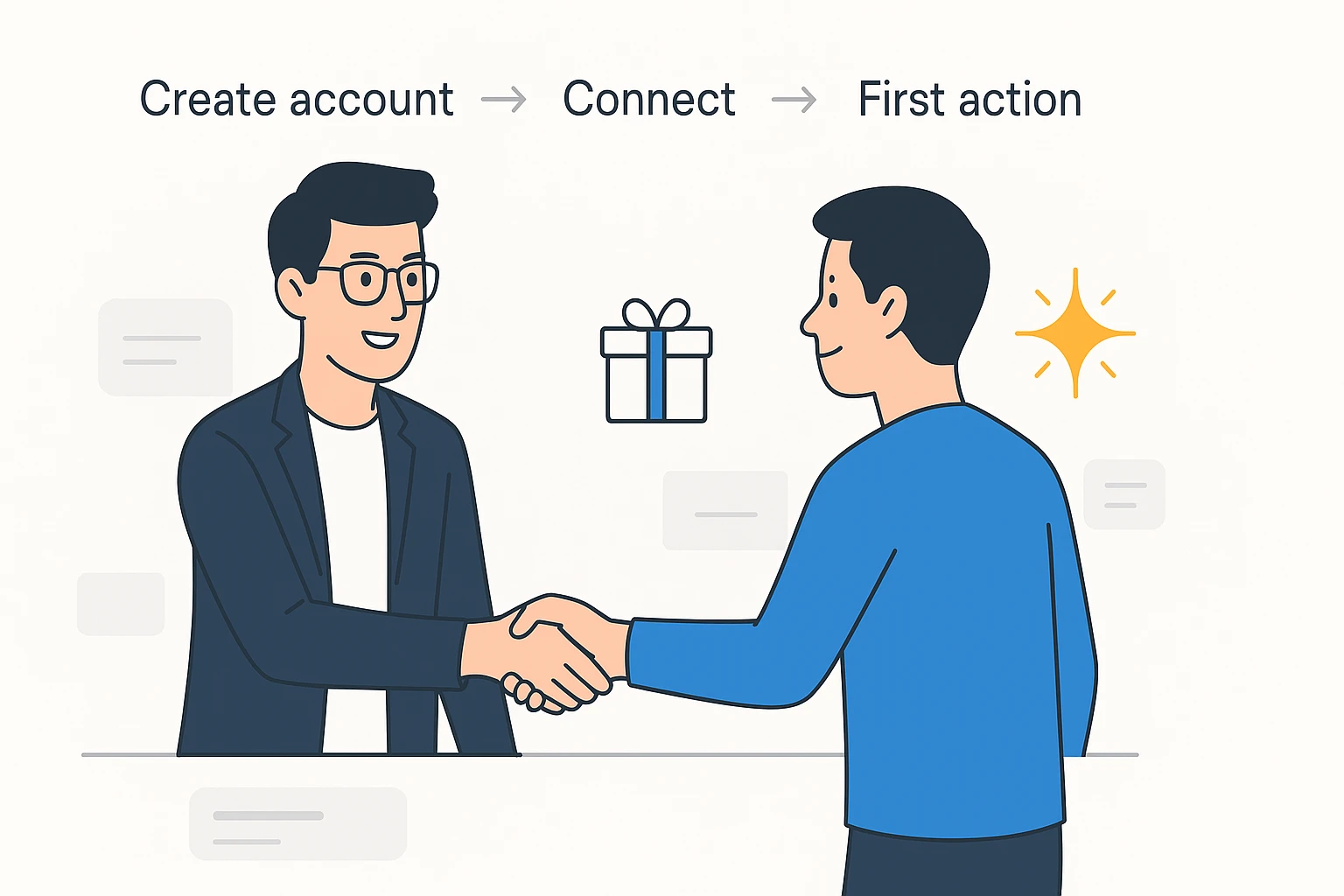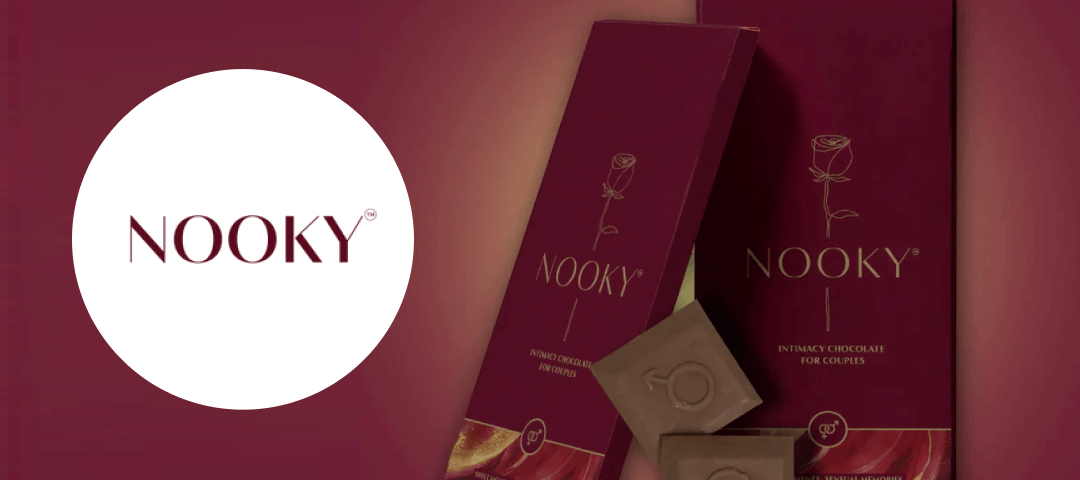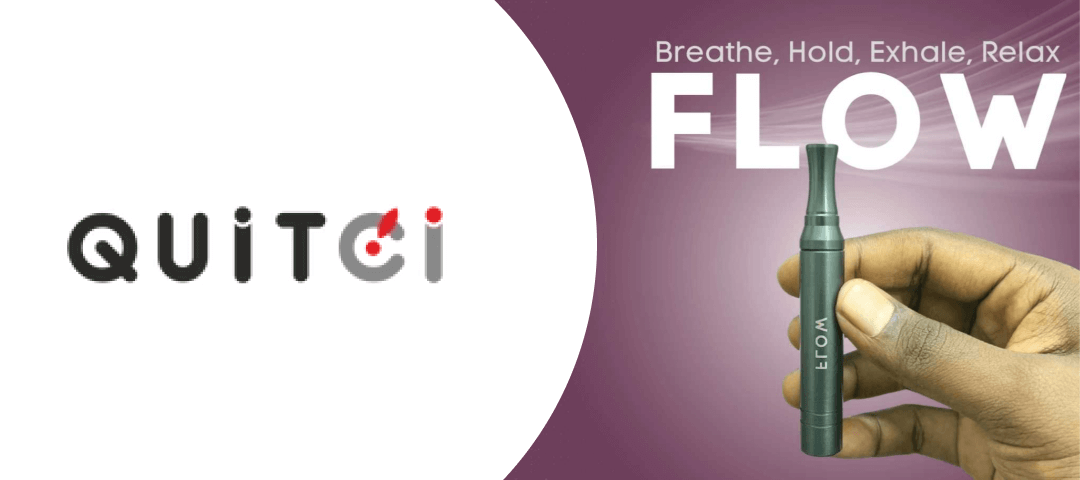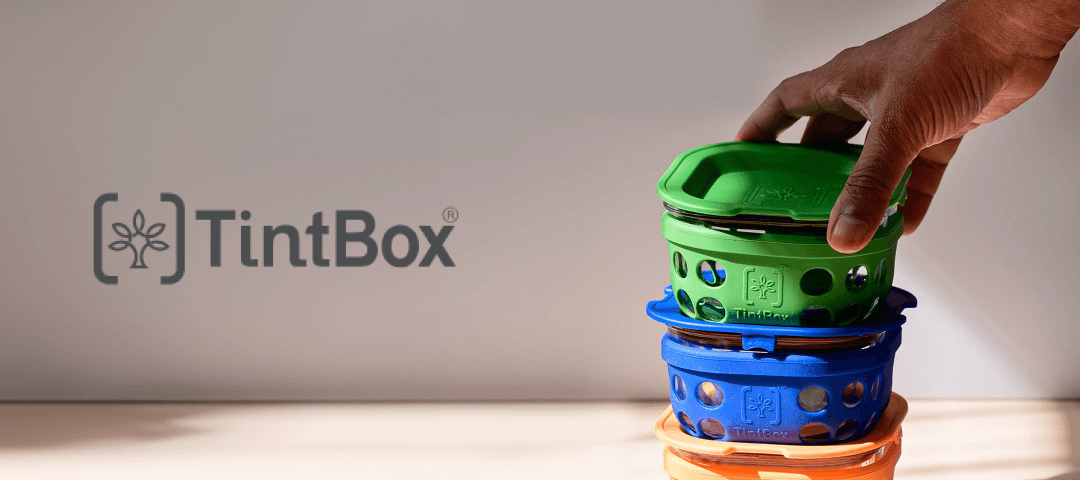Welcome Offers vs. Real Value: Designing First-Session Incentives That Don’t Backfire
SharkTankSeason
·
Aug 26 2025

Founders love the idea of a “welcome offer” because it feels like momentum on day one. Done well, an incentive lowers the barrier to a first action, turns curiosity into activation, and teaches the product’s core value faster than a pitch ever could. Done poorly, it attracts the wrong users, trains good users to wait for discounts, and buries your support team under “Where’s my bonus?” tickets. This guide shows how to design first-session incentives that create long-term value, not short-term noise.
Before we get practical, align on scope: a welcome offer is the smallest, clearest promise you can make to a new user in exchange for a specific action that proves intent. That promise must be easy to understand, easy to track, and easy to decline. If you want a neutral example of how teams lay out eligibility, expiry, and step-by-step claiming on a dedicated page, see a typical structure here – use the layout ideas, not the pitch.
Start with intent: what behavior are you trying to unlock?
Every effective offer answers three plain questions:
- Who is this for? New accounts only, or also new teams within an org?
- What action proves intent? Completing onboarding, connecting a data source, inviting a teammate, shipping a first task – pick one.
- Why should they care? The reward must amplify the product’s core value (faster start, deeper insight, lower risk), not distract from it.
If you can’t finish those sentences in one breath, you don’t have an offer – you have a marketing idea that will confuse people and poison cohorts. Tie the incentive to the first “aha” your product reliably delivers. In analytics, that might be “connect a source and see your first chart.” In collaboration, “invite one teammate and share a doc.” If the reward pushes users toward the moment where the product sells itself, you’re on the right track.
UX patterns that prevent backlash (and train the right behavior)
Think like an investor on Shark Tank: the unit economics must make sense, and the mechanism must be hard to abuse. Three patterns keep incentives clean.
Progressive disclosure. Don’t throw terms at the user before they care. Show the headline and action ladder on the landing page; reveal specifics (deadlines, limits) in a compact drawer when they click “Learn more.” Inside the product, keep the terms one tap away from the progress bar. The user should never wonder “what counts?” or “what’s left?”
One CTA per view. Offers turn messy when the screen mixes “claim,” “upgrade,” and “invite” in the same breath. Each screen gets one verb. If you need two, the app is trying to do two different journeys at once.
On-device verification, not honor systems. Any step the system cannot verify will become a support ticket. If your unlock condition depends on a human review, you’ve built a headache. Design the ladder to auto-confirm each step.
Finally, build decline states with dignity: “No thanks – show me the product.” Pressure creates churn; choice creates trust.
Price the offer like an owner: the simple math
A welcome incentive is a small bet on future margin. Price it with a napkin model you can explain to your board:
- Cost per activated user (CPAᴀ) = (Offer cost × claim rate) ÷ activation rate.
- Payback window = CPAᴀ ÷ (gross margin per activated user per month).
- Cohort lift = (Day-30 retention with offer − Day-30 retention control).
Your goal: CPAᴀ below your blended acquisition cost, and a measurable retention lift. If the offer inflates signups but not activation or retention, it’s buying noise. Kill it or change the unlock action so it screens for intent.
Avoid the most expensive trap: training users to wait. If you discount subscription price as a “welcome,” expect future upgrade friction. Prefer value-add rewards (white-glove setup, credits for a specific feature, extended trial after activation) over pure price cuts.
What to measure in the first 30 days (signals investors believe)
Skip vanity metrics (page views, clicks). Track the chain that shows real value creation:
- Offer view → start rate. Does the message resonate?
- Step-by-step funnel. Where do people stall? Fix the steepest step weekly.
- Activation delta vs control. Always A/B test an offer against “no offer.”
- Support load. Tickets per 100 claimants is a canary for confusing terms.
- Refund/chargeback rate. If this rises, you’re attracting the wrong users.
- Cohort LTV proxy. Use week-1 proxies (feature depth, team invites) while true LTV matures.
If you cannot measure a clean activation delta, you’re flying blind. Add events and try again – investors will ask.
Guardrails against abuse (without punishing good users)
Incentives invite creativity – sometimes the wrong kind. Put the friction where abusers feel it, not where good users do.
- One per person, one per payment instrument, device checks where lawful. Match on multiple signals; never rely on a single cookie.
- Reasonable cool-downs. If repeat offers are allowed (say, team-level), impose time gaps and require genuine new value (new seat, new workspace).
- Soft starts, hard stops. Let users begin the ladder before email/ID verification, but require verification before reward release.
- Clear fraud policy. Publish it. Quiet, firm, and fair. Honest users appreciate the line.
The tone matters: protect the system, don’t scold the user.
Shipping plan founders can run without drama
Here’s a calm three-week rollout that fits a small team:
Week 1 – Define and draft.
Pick one unlock action tied to your aha moment. Write the headline, ladder, and FAQ in plain English. Build a static landing page and an in-app progress bar (even if it’s simple text). Instrument events.
Week 2 – A/B and iterate.
Run 50/50 traffic between offer and control. Fix the steepest step daily. Keep support in the loop; add a canned reply that points to the FAQ and progress bar.
Week 3 – Tighten or retire.
If activation delta ≥ target and support load is flat, keep the offer and begin pricing optimization. If not, kill it quickly and document the learning. Good teams don’t cling; they redeploy.
Copy you can steal
- Headline: “Get an extended trial after you complete your first workflow.”
- Ladder: “Create your workspace → connect one source → run your first [core action].”
- Status: “2 of 3 steps complete • 6 days left • Need help?”
- FAQ (one line each): “Who’s eligible?” “How do I track progress?” “When do I receive the reward?” “What if I change my mind?”
Read it out loud. If it sounds like a human, ship it. If it sounds like a contract, keep editing.
Bottom line: Welcome offers work when they accelerate the first real use of your product and make that use easier to start, easier to finish, and easier to repeat. Tie the reward to your aha moment, state terms in one breath, show progress in-app, and price the incentive like an owner. Measure activation and retention, not noise. If an offer can’t earn its keep in 30 days, thank it for its service and move on – the best growth levers make good users successful, not just numerous.
Latest Blogs From SharkTankSeason.com

Subculture Faced Tough Questions on Shark Tank India Season 4 and Left Without Funding
Subculture, a Jaipur-based startup, appeared on Shark Tank India Season 4 but struggled with business viability concerns and left without funding. Read more!
SharkTankSeason
·
Aug 26 2025
Nooky Faced Tough Questions on Shark Tank India Season 4 and Left Without Funding
Nooky, a New Delhi-based startup, appeared on Shark Tank India Season 4 but struggled with business viability concerns and left without funding. Read more!
SharkTankSeason
·
Aug 26 2025
Explore the Complete List of Shark Tank India Season 4 Funded Companies
Explore the complete list of all companies funded in Shark Tank India Season 4. Discover their inspiring stories, groundbreaking innovations, and the investments that fueled their journey. 89 Companies, including FAE Beauty, Confect, Culture Circle, BL Fabric, Go Zero, NOOE, etc. appeared in Shark Tank India Season 4 and showcased what they are building and secured funding from the sharks.
SharkTankSeason
·
Aug 26 2025
Explore the Complete List of Shark Tank India Season 4 Companies
Explore our exhaustive list of all Shark Tank India Season 4 companies. Discover each company's story, innovations, and the investments they secured. 148 Companies, including FAE Beauty, Confect, Culture Circle, BL Fabric, etc. appeared in Shark Tank India Season 4 and showcased what they are building and secured funding from the sharks.
SharkTankSeason
·
Aug 26 2025
The Bear House secured investment from Namita Thapar on Shark Tank India Season 4
The Bear House, a Bengaluru-based brand, appeared on Shark Tank India Season 4, seeking ₹ 3 Crore For 1% Equity. The brand secured ₹ 1 Crore For 1% Equity from Namita Thapar
SharkTankSeason
·
Aug 26 2025
FitFeast secured investment from Anupam Mittal, Viraj Bahl on Shark Tank India Season 4
FitFeast, a Mahipalpur Extension-based brand, appeared on Shark Tank India Season 4, seeking ₹ 1 Crore for 6.5% Equity. The brand secured ₹ 1 Crore for 18% Equity from Anupam Mittal, Viraj Bahl
SharkTankSeason
·
Aug 26 2025
EasyRugs secured investment from Aman Gupta, Vineeta Singh on Shark Tank India Season 4
EasyRugs, a New Delhi-based brand, appeared on Shark Tank India Season 4, seeking ₹ 35 Lakhs for 5% Equity. The brand secured ₹ 35 Lakhs for 5% Equity from Aman Gupta, Vineeta Singh
SharkTankSeason
·
Aug 26 2025
Taffykids secured investment from Vineeta Singh, Ritesh Agarwal on Shark Tank India Season 4
Taffykids, a Mumbai-based brand, appeared on Shark Tank India Season 4, seeking ₹ 75 Lakhs for 1% Equity. The brand secured ₹ 75 Lakhs for 1.5% Equity from Vineeta Singh, Ritesh Agarwal
SharkTankSeason
·
Aug 26 2025
Good Monk secured investment from Vineeta Singh on Shark Tank India Season 4
Good Monk, a Bangalore-based brand, appeared on Shark Tank India Season 4, seeking ₹ 1 Crore for 1.67% Equity. The brand secured ₹ 50 Lakhs for 1% Equity from Vineeta Singh
SharkTankSeason
·
Aug 26 2025
Tribalveda secured investment from Ritesh Agarwal on Shark Tank India Season 4
Tribalveda, a VASAI-based brand, appeared on Shark Tank India Season 4, seeking ₹ 50 Lakhs for 2% Equity. The brand secured ₹ 50 Lakhs for 2.8% Equity from Ritesh Agarwal
SharkTankSeason
·
Aug 26 2025
Ivory Natural secured investment from Namita Thapar on Shark Tank India Season 4
Ivory Natural, a Ghaziabad-based brand, appeared on Shark Tank India Season 4, seeking ₹ 50 Lakhs for 1.25% Equity. The brand secured ₹ 50 Lakhs for 5% Equity from Namita Thapar
SharkTankSeason
·
Aug 26 2025
QuitCi Faced Tough Questions on Shark Tank India Season 4 and Left Without Funding
QuitCi, a Kolar-based startup, appeared on Shark Tank India Season 4 but struggled with business viability concerns and left without funding. Read more!
SharkTankSeason
·
Aug 26 2025
TintBox Faced Tough Questions on Shark Tank India Season 4 and Left Without Funding
TintBox, a -based startup, appeared on Shark Tank India Season 4 but struggled with business viability concerns and left without funding. Read more!
SharkTankSeason
·
Aug 26 2025
Krishnsakhi Faced Tough Questions on Shark Tank India Season 4 and Left Without Funding
Krishnsakhi, a Bengaluru-based startup, appeared on Shark Tank India Season 4 but struggled with business viability concerns and left without funding. Read more!
SharkTankSeason
·
Aug 26 2025
Dhaaga Life Faced Tough Questions on Shark Tank India Season 4 and Left Without Funding
Dhaaga Life, a Surat-based startup, appeared on Shark Tank India Season 4 but struggled with business viability concerns and left without funding. Read more!
SharkTankSeason
·
Aug 26 2025
Explore Shark Tank India Season 3 Companies

Amazon Solimo
Upgrade your everyday essentials with Amazon Solimo – quality you can trust at prices you'll love! Shop now!

Canvaloop Fibre
A sustainable fabrics manufacturer in India uses agricultural waste to create high-quality, eco-friendly fibres for fashion, apparel, and home textiles.
Raised: ₹ 2 Crores for 4% Equity

Cool The Globe
Combat climate change with Cool The Globe. Empowering & Uniting Changemakers Globally For Climate Action
Raised: ₹ 25 Lakhs for 8% Equity

Lea Clothing Co
Combat climate change with Cool The Globe. Empowering & Uniting Changemakers Globally For Climate Action
Raised: ₹ 1 Crore for 4% Equity + 2% royalty until ₹ 1.5 Crores are recouped
Sharks In Shark Tank INDIA
Explore Shark Tank USA Season 15 Companies

Amazon Solimo
Upgrade your everyday essentials with Amazon Solimo – quality you can trust at prices you'll love! Shop now!

Flaus
Discover the world’s first eco-friendly, super-healthy electric flosser that makes flossing as quick and easy as brushing your teeth - and that's the real tooth!
Raised: $250,000 for 8% Equity

Arber
Biological Plant Wellness Products to nourish green spaces and empower home gardeners
Raised: No Deal

Sip Herbals
Meet Sip: the herbal coffee alternative of 100% chicory root, carob, and dandelion root to keep the coffee feels, without the flaws. No Caffiene. No Gluten.
Raised: No Deal

























